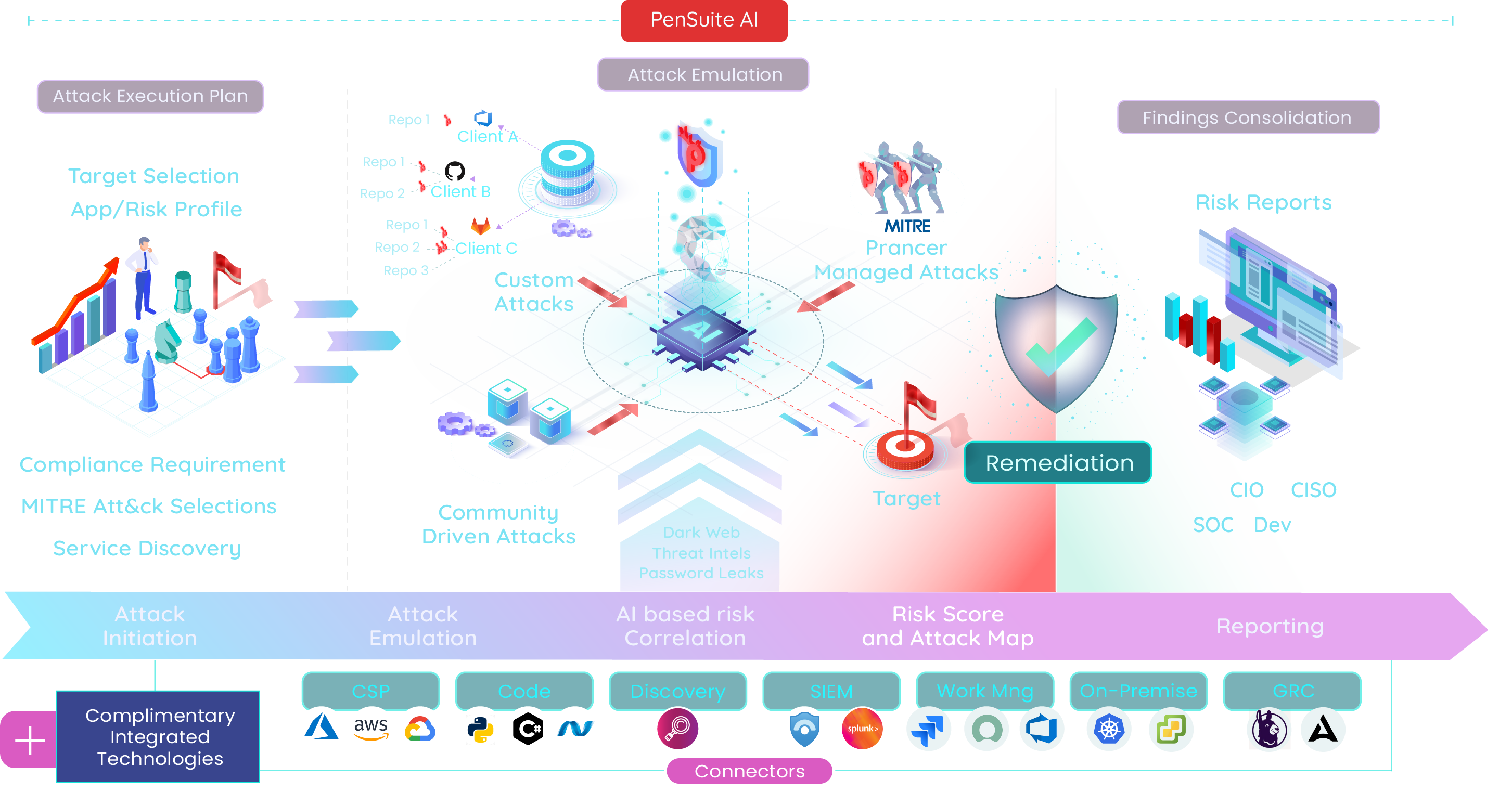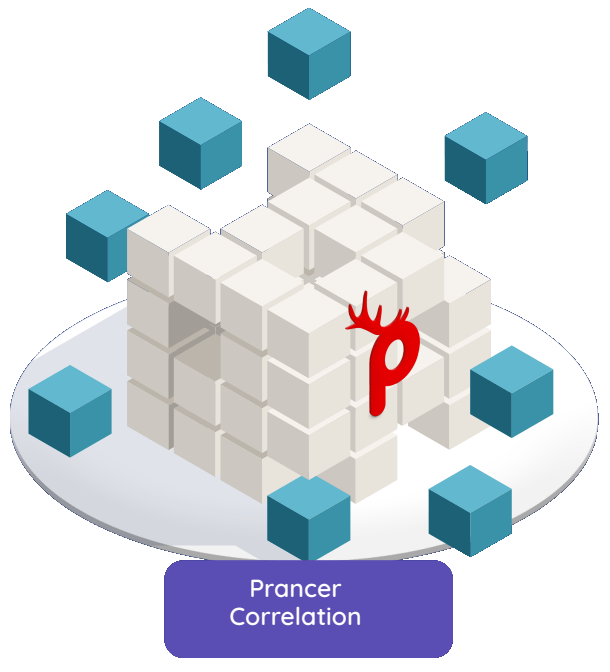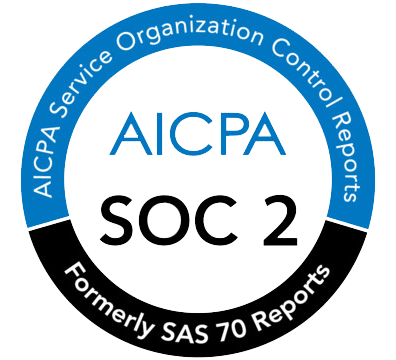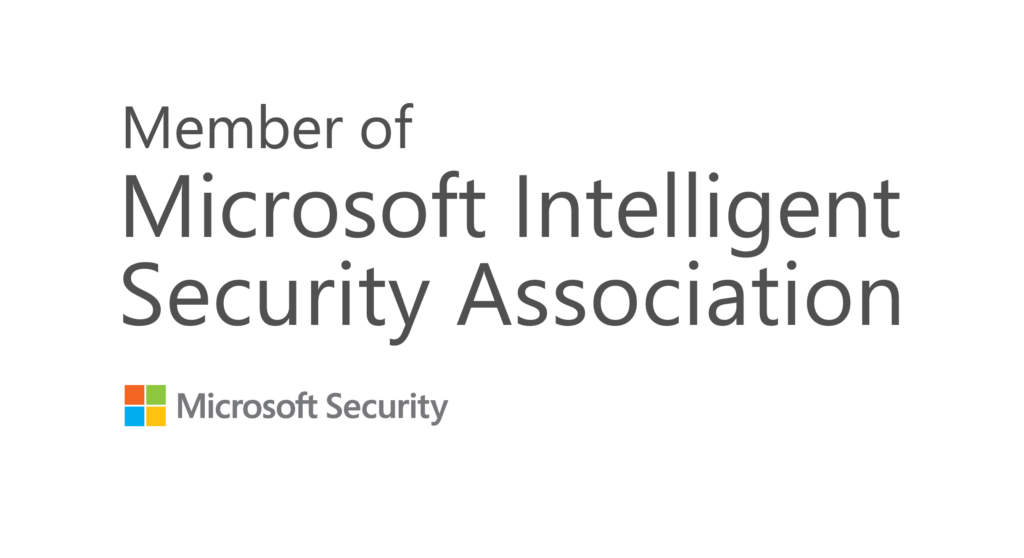


Seamlessly add MITRE ATT&CK tactics and techniques for adversarial scenario selection or filtering results.
Codify and scale business logic attack scenarios with repository-based deployment.
Pentest as Code
Automate security testing with Prancer’s Pentest as Code (PAC). Integrate seamlessly into your CI/CD pipeline for transparent, continuous, consistent, and scalable assessments.
Attack path Analysis
Identify attacker pathways with AI-driven Attack Path Analysis (APA). Visualize and analyze vectors to strengthen defenses and reduce vulnerabilities.
Deploy serverless scanners that auto-scale to target thousands of endpoints worldwide.
Proactively capture security issues with a continuously running verification engine.
Turn actionable threat intel into informed security decisions to address emerging and existing cyber threats.
Scan the dark web for company-related information and URL vulnerabilities.
Correlate risks across tools and generate real-world risk scores tailored to your environment.
Leverage an advanced automated pentesting engine to identify and validate system exposures.
Deliver fully customizable, automated reports with findings in various formats.
Ensure security across public clouds, private clouds, and on-premises environments in hybrid setups.
Pentest As A Service
Leverage Prancer’s Pentest As A Service (PTaaS) for comprehensive and continuous security testing that mimics real-world attacks. Ensure your systems are fortified against the latest threats with expert-led assessments and automated vulnerability checks.
Attack Surface Management
Identify and manage all potential entry points with Prancer’s Attack Surface Management (ASM). Gain complete visibility into your external digital footprint to proactively mitigate risks before they become threats.
Cloud Security Posture management
Secure your cloud environments with Prancer’s Cloud Security Posture Management (CSPM). Automatically detect and remediate security misconfigurations and ensure compliance with industry standards.
Infra As Code testing
Ensure your infrastructure code is secure with Prancer’s Infrastructure as Code (IaC) scanning. Detect and remediate vulnerabilities in your code with AI generated code suggestions before they are deployed, maintaining a robust and secure environment.
Source Code Analysis
Protect your codebase with Prancer’s Static Application Security Testing (SAST) and Secret Scanning. Identify and remediate security flaws and exposed secrets early in the development lifecycle.
Software Supply Chain Analysis
Secure your software supply chain with Prancer’s Software Composition Analysis (SCA). Detect vulnerabilities in third-party components and manage risks associated with open-source dependencies.
Third party findings
Streamline your security operations with Prancer’s consolidated findings. Integrate and correlate third-party vulnerability data to gain a unified view of your security posture and prioritize remediation efforts effectively.
Prancer auto-discovers enterprise resources in the cloud and find out all the attack surfaces at the Infrastructure and Application layers.
Prancer engine reviews the security configuration of the resources and correlates data from different sources. It immediately reports back all the security misconfigurations and provides auto remediation.

Based on the Intelligence out of the auto-discovery and analysis phase, Prancer strategizes attacks against enterprise assets.
Prancer engine creates attack chains and lateral movement strategies. It schedules the attacks on demand, based on CI / CD pipeline or in a continuous mode.
The latest attacks reload from the codified attack database. This database is maintained by the Prancer Research team feeding from CVEs, CSPs, and national vulnerability databases.
Prancer patented Pentesting as Code (PAC) engine makes attacks emulation and cloud pentesting against enterprise assets to find vulnerabilities and exploits the system.
Prancer presents the prioritized risks and security assessment of company assets from the attacker's viewpoint. Prancer's automated cloud pentesting solution uses native hacker tools to find exploits.


Prancer Enterprise partnered with Xforia, a talent workforce provider for healthcare companies, to secure their multi-cloud ERP and CRM environments o...


Prancer Enterprise helped Avista Technologies, an advanced membrane solutions provider, secure their Microsoft Azure cloud environment, increasing sec...


Prancer Enterprise provided Emergere Technologies, a talent solutions provider, with an end-to-end security solution for their Google Cloud Platform e...


New Line Info partnered with Prancer Enterprise for penetration testing and autonomous security solutions for their Microsoft Azure cloud environment....


HTC Global Services, partnered with Prancer Enterprise for an end-to-end penetration testing and security solution for their Google Cloud Platform env...


Prancer Enterprise collaborated with Liquware, a leading provider of talent workforce solutions for healthcare companies, to provide a comprehensive p...
San Diego, CA – May 24th 2023 – Prancer, a leading provider of cloud security solutions, is excited to announce the availability of its products on Azure Marketplace. This strategic move expands Prancer’s customer reach and provides existing clients with the convenience and acce...
Read more












